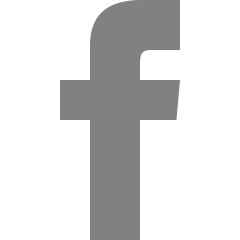[HTML] 9. 간단한 웹페이지 완성
2021. 3. 24. 00:23
* 본 게시글은 생활코딩 교육과정을 공부한 내용을 정리한 글입니다.
www.opentutorials.org/course/3084/18431
웹사이트 완성 - 생활코딩
--- 지금까지 웹페이지를 만드는 방법을 배웠습니다. 또 페이지와 페이지를 링크라는 길로 연결하는 방법도 배웠습니다. 링크는 본드, 실과 같은 것으로도 비유할 수 있습니다. 페이지가 모이면
www.opentutorials.org
간단한 웹페이지 완성
#index.html
<!DOCTYPE html>
<html>
<head>
<meta charset="utf-8">
<title>WEB-index.html</title>
</head>
<body>
<h1><a href="index.html">WEB</a></h1>
<ol>
<li><a href="1.html">HTML</a></li>
<li><a href="2.html">CSS</a></li>
<li><a href="3.html">JavaScript</a></li>
</ol>
<h2>WEB</h2>
The World Wide Web (abbreviated WWW or the Web) is an information space where documents and other web resources are identified by Uniform Resource Locators (URLs), interlinked by hypertext links, and can be accessed via the Internet.[1] English scientist Tim Berners-Lee invented the World Wide Web in 1989. He wrote the first web browser computer program in 1990 while employed at CERN in Switzerland.[2][3] The Web browser was released outside of CERN in 1991, first to other research institutions starting in January 1991 and to the general public on the Internet in August 1991.
</body>
</html>

#1.html
<!doctype HTML>
<html>
<head>
<title>WEB1 - html</title>
<meta charset="utf-8">
</head>
<body>
<h1><a href="index.html">WEB</a></h1>
<ol>
<li><a href="1.html">HTML</a></li>
<li><a href="2.html">CSS</a></li>
<li><a href="3.html">JavaScript</a></li>
</ol>
<h2>HTML</h2>
<p><a href="https://www.w3.org/TR/html5" target="_blank" title="html5 specification">Hypertext Markup Language (HTML)</a> is the standard markup language for
<strong>creating <u>web</u> pages</strong> and web applications.Web browsers receive
HTML documents from a web server or from local storage and render them into multimedia
web pages. HTML describes the structure of a web page semantically and originally included cues for the appearance of the document.
<img src="sample.jpg" width="100%">
</p><p style="margin-top:60px;"> HTML elements are the building blocks of HTML pages.
With HTML constructs, images and other objects, such as interactive forms,
may be embedded into the rendered page. It provides a means to create structured documents
by denoting structural semantics for text such as headings, paragraphs, lists, links, quotes and other items.
HTML elements are delineated by tags, written using angle brackets. </p>
</body>
</html>

#2.html
<!DOCTYPE html>
<html>
<head>
<meta charset="utf-8">
<title>WEB-2.html</title>
</head>
<body>
<h1><a href="index.html">WEB</a></h1>
<ol>
<li><a href="1.html">HTML</a></li>
<li><a href="2.html">CSS</a></li>
<li><a href="3.html">JavaScript</a></li>
</ol>
<h2>CSS</h2>
Cascading Style Sheets (CSS) is a style sheet language used for describing the presentation of a document written in a markup language. Although most often used to set the visual style of web pages and user interfaces written in HTML and XHTML, the language can be applied to any XML document, including plain XML, SVG and XUL, and is applicable to rendering in speech, or on other media. Along with HTML and JavaScript, CSS is a cornerstone technology used by most websites to create visually engaging webpages, user interfaces for web applications, and user interfaces for many mobile applications.
</body>
</html>
#3.html
<!DOCTYPE html>
<html>
<head>
<meta charset="utf-8">
<title>WEB-3.html</title>
</head>
<body>
<h1><a href="index.html">WEB</a></h1>
<ol>
<li><a href="1.html">HTML</a></li>
<li><a href="2.html">CSS</a></li>
<li><a href="3.html">JavaScript</a></li>
</ol>
<h2>JavaScript</h2>
JavaScript (/ˈdʒɑːvəˌskrɪpt/[6]), often abbreviated as JS, is a high-level, dynamic, weakly typed, prototype-based, multi-paradigm, and interpreted programming language. Alongside HTML and CSS, JavaScript is one of the three core technologies of World Wide Web content production. It is used to make webpages interactive and provide online programs, including video games. The majority of websites employ it, and all modern web browsers support it without the need for plug-ins by means of a built-in JavaScript engine. Each of the many JavaScript engines represent a different implementation of JavaScript, all based on the ECMAScript specification, with some engines not supporting the spec fully, and with many engines supporting additional features beyond ECMA.
</body>
</html>
'Programming > HTML' 카테고리의 다른 글
| [HTML] 10. 원시웹 (0) | 2021.03.24 |
|---|---|
| [HTML] 8. 링크를 나타내는 태그 <a> (0) | 2021.03.23 |
| [HTML] 7. HTML 문서의 기본 구조 (0) | 2021.03.23 |
| [HTML] 6. 태그 간의 관계, 부모자식과 목록 (2) | 2021.03.23 |
| [HTML] 5. 속성 (0) | 2021.03.23 |












